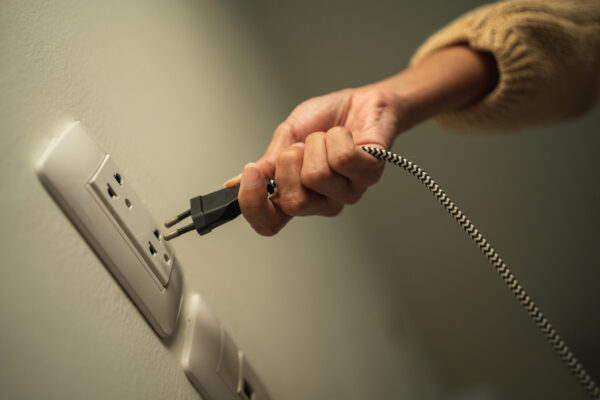Millions of UK households are unknowingly wasting money every day through appliances left on standby. From game consoles and smart TVs to routers and kitchen gadgets, this “invisible drain” is quietly adding hundreds of pounds a year to energy bills — even when the devices appear to be off.
As the colder months set in and usage spikes across homes, experts are warning that standby electricity consumption is a major contributor to rising costs. With Ofgem’s price cap now setting the typical dual fuel bill at £1,755 per year, every unnecessary watt of energy counts.
The real cost of standby power
The Energy Saving Trust estimates that standby appliances add an average of £65 to £80 per year to a typical UK electricity bill. However, new industry data suggests the figure could be even higher in households packed with smart devices and entertainment equipment.
Games consoles such as the PlayStation 5 and Xbox Series X can use up to 10 watts when idle, while smart TVs, routers, and kitchen appliances each draw small amounts of power 24 hours a day. Across millions of homes, the total national cost of standby power may exceed £500 million annually.
Many people assume “standby” means no power consumption — but the reality is that most appliances continue to use electricity for updates, network connections, and background functions. Even leaving a phone charger plugged in can waste 0.5 watts continuously.
Why the impact is growing
The average UK home now has over ten internet-connected devices, double the figure from a decade ago. These always-on gadgets — from speakers to security cameras — constantly draw current, even when not actively used.
Combined with rising electricity unit rates and higher standing charges, this silent energy usage is becoming more costly than ever before. Ofgem’s data shows that electricity prices remain 60% higher than before the energy crisis, meaning the same standby power now costs significantly more each year.
The effect on dual fuel households
For households on combined gas and electricity plans, these hidden costs can tip the balance of their total annual spend. Those paying under dual fuel tariffs often underestimate the share of their bill that comes from electrical standby power.
Even small, constant energy draws — like routers, printers, and streaming boxes — can add 5–10% to the electricity portion of a dual fuel bill. Over time, this erodes the value of bundled tariffs, particularly when heating and hot water already dominate winter costs.
Which appliances waste the most?
According to the latest figures from the Energy Saving Trust and Ofgem, the following common devices are among the worst standby offenders:
| Appliance | Average Standby Use (Watts) | Annual Cost (at 28p/kWh) |
| Smart TV | 3–10 | £7–£25 |
| Game Console | 5–10 | £12–£25 |
| Broadband Router | 10–12 | £25–£30 |
| Smart Speaker | 3–4 | £7–£10 |
| Microwave (Clock On) | 2–3 | £5–£7 |
| Phone Charger (Plugged In) | 0.5 | £1–£2 |
While these figures may appear small individually, the cumulative total across multiple devices running 24/7 quickly adds up.
How to track and cut standby costs
The first step in controlling hidden energy use is identifying where it occurs. Tools like Free Price Compare’s energy bill calculator help households estimate how much each appliance contributes to total costs based on power rating and hours of use.
Once users know their energy breakdown, simple actions can lead to big savings:
- Unplug or fully switch off devices when not in use.
- Use smart plugs or timers to automatically cut power overnight.
- Disable “quick start” and “instant on” settings on TVs and consoles.
- Avoid leaving chargers or adaptors plugged in when not needed.
Even reducing standby power by just 50% can lower an average household’s annual bill by £40 to £80 — a meaningful saving during the ongoing cost of living squeeze.
Why awareness still lags behind
Despite widespread advice from energy regulators, many households underestimate the problem because modern devices show no visible indicator lights or switches. Others assume that low-power usage is negligible.
However, the Energy Saving Trust warns that the collective effect across the UK grid is equivalent to the energy demand of hundreds of thousands of homes. By simply turning off unused appliances, Britain could save hundreds of millions of kilowatt hours each year — and cut emissions in the process.
The convenience of always-on technology means consumers often trade efficiency for accessibility. But as bills rise, that trade-off is becoming harder to justify.
How comparison and switching can help
While reducing waste helps immediately, reviewing your tariff can deliver longer-term savings. Many fixed-rate or flexible plans now offer better unit rates than default caps, particularly for households that manage consumption closely.
By using Free Price Compare, households can check which suppliers offer the best balance between standing charges and unit prices. Comparing dual fuel tariffs can also reveal whether combining fuels remains the most cost-effective option for your region.
The bottom line
The silent standby drain may seem small on a daily basis, but over time it quietly inflates household bills and undermines the benefits of efficient tariffs.
As winter approaches, the smartest savings often come from what happens when the lights are off — not on. Checking your usage with an energy bill calculator and switching where needed through Free Price Compare are simple steps that can keep energy costs under control this season.


